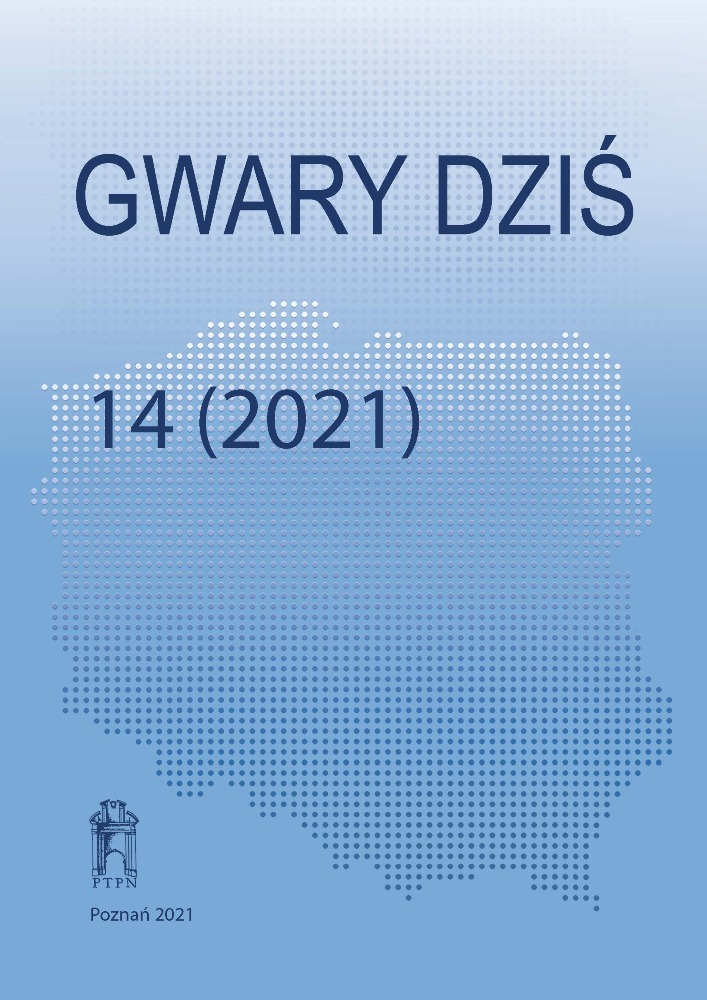Abstract
The subject of the article includes non-typical research issues faced by contemporary researchers of the language spoken in the village since the late 20th and the early 21st century. In the description of the linguistic changes of the village communities, the researchers need to take into account the changes taking place both in dialects and in the general Polish language. This is because the subject of their analyses includes the rural sub-standard which is also constantly modified by the media Polish and the English-language standards. I have shown non-typical research problems based on the examples of disappearing “family formants”, i. e. suffixes which, in local dialects, are used to create the names of wives, sons and daughters. These formants have been collected in villages near Dukla in the Low Beskids. The material, which encompasses the entire 20th century and the early 21st century, also contains some examples showing the phenomenon of removing the inflection of first names and surnames in the rural sub-standard in the syntactic structures like first name + od + gen. sg. surname // first name // nickname of father or mother.
References
Handke K. (2008), Socjologia języka, Warszawa.
Karaś M. (2017), O gwarowych formantach onomastycznych, [w:] M. Karaś, Ze studiów leksykologicznych i onomastycznych, Kraków, s. 155–163.
Kosyl C. (1993), Nazwy osobowe, [w:] Encyklopedia kultury polskiej XX wieku, t. 2: Współczesny język polski, red. J. Bartmiński, Wrocław, s. 423–437.
Kurek H. (2018), Kultura ludowa przełomu wieków XX i XXI. Tradycja i zmiana, „Słowo. Studia językoznawcze”, nr 9, s. 84–91.
Kurek H. (2019a), Obraz społeczności wiejskiej Dukielszczyzny zakrzepły w nazwach kobiet zamężnych. Tradycja i zmiana, Studia Dialektologiczne V, red. B. Grabka, R. Kucharzyk, A. Tyrpa, Kraków, s. 203–213.
Kurek H. (2019b), Przemiany fleksji nominalnej w polszczyźnie przełomu wieków XX i XXI (na przykładzie imion i nazwisk oraz appellativów), Kraków.
Kurek H. (2020), Obraz społeczności wiejskiej zakrzepły w nazwach synów i córek. Tradycja i zmiana (na przykładzie wsi poddukielskich w Beskidzie Niskim), „LingVaria”, XV, nr 2 (30), s. 121–132.
Markowski A. (2005), Kultura języka polskiego. Teoria. Zagadnienia leksykalne, Warszawa.
Miodunka W. (2003), Moc języka i jej znaczenie w kontaktach językowych i kulturowych, [w:] Współczesna polszczyzna. Wybór opracowań, t. 2: Warianty języka, red. J. Bartmiński, J. Szadura, Lublin, s. 12–16.
Ożóg K. (2007), Konteksty kulturowe współczesnej polskiej wsi, [w:] Gwary dziś, t. 4. Konteksty dialektologii, red. J. Sierociuk, Poznań, s. 213–220.
Sierociuk J. (2012), Dialektologia wobec językowo-kulturowych przeobrażeń współczesnej wsi, [w:] Gwary dziś, t. 6. Aktualne problemy dialektologii słowiańskiej, red. J. Sierociuk, Poznań, s. 219–234.
License
Authors
Authors of texts accepted for publication in „Gwary Dziś" are required to complete, sign and return to the editor's office the Agreement for granting a royalty-free license to works with a commitment to grant a CC sub-license.
Under the agreement, the authors of texts published in „Gwary Dziś" grant the Adam Mickiewicz University in Poznań a non-exclusive, royalty-free license and authorize the use of Attribution-NoDerivatives 4.0 International (CC BY-ND 4.0) Creative Commons sub-license.
The authors retain the right to continue the free disposal of the work.
Users
Interested Internet users are entitled to use works published in „Gwary Dziś" since 2016 under the following conditions:
- attribution - obligation to provide, together with the distributed work, information about the authorship, title, source (link to the original work, DOI) and the license itself.
- no derivatives - the work must be preserved in its original form, without the author's consent it is not possible to distribute the modified work, such as translations, publications, etc.
Copyrights are reserved for all texts published before 2015.
Miscellaneous
Adam Mickiewicz University in Poznań retains the right to magazines as a whole (layout, graphic form, title, cover design, logo etc.).

